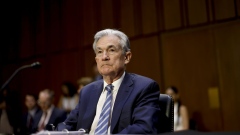Mar 22, 2022
Markets are pushing Fed into developing-economy territory
, Bloomberg News
I don't believe the Fed is going to hike rates seven times: Starlight Capital CEO
Judging from price movements on Monday, the Federal Reserve risks slipping further into a no-win interaction with markets that is more familiar to developing countries that lack policy credibility than to a systemically important central bank — let alone the world’s most powerful one. Absent a quick reestablishment of its inflation credential, something that the markets doubted again on Monday, the Fed would face even more of a no-win policy paradigm that would cause what, only a few months ago, was avoidable harm to livelihoods in the U.S. and beyond.
This unfortunate sequence is painfully familiar to some developing countries:
- First, through a misdiagnosis of the economic situation or policy inertia or both, the central bank falls behind inflation realities and erodes its inflation-fighting credibility.
- Second, swallowing its pride, the central bank acknowledges that inflation is too high, toughens up its policy narrative and embarks on the needed measures.
- Third, rather than be reassured by this (albeit late) change, markets run further away from the central bank and signal the need for even more aggressive policy measures.
- Fourth, the central bank finds itself in the dilemma of either risking a recession by validating the ever-more hawkish market pricing or seeking to minimize such damage, often unsuccessfully, by enabling high and potentially more destabilizing inflation to persist even longer.
With this sequence in mind, consider what happened on Monday, less than a week after the Fed’s top policy-making committee raised interest rates by 25 basis points and signaled further increases.
In a presentation to the National Association for Business Economics, Chair Jerome Powell tried to restore the Fed’s eroded inflation-fighting credibility by signaling that the central bank is willing to increase interest rates by 50 basis points in May, repeat that at other meetings and continue raising past the neutral level in a bid to meet its inflation objective. Yet nominal market yields, the yield curve and inflation breakevens were far from reassured. Instead, they moved further away from the Fed.
While Russia’s invasion of Ukraine has amplified the Fed’s policy challenges, the hole it is in is of its own making, and that was illustrated by Monday’s developments.
Despite ample evidence to the contrary starting almost a year ago, the Fed stuck to its “transitory” characterization of inflation until the end of November — what I called months earlier one of the worse inflation calls in the history of the Fed. Even after it belatedly “retired” the word from its vocabulary, the Fed kept its foot on the accelerator of policy stimulus. To illustrate the extent to which its policies remained misaligned, it was still injecting liquidity through its asset purchases earlier this month, including the week in which the February reading for U.S. inflation came at 7.9 per cent.
For many months, I have been arguing that the Fed should come clean on why it got the inflation call so wrong, explain how it has improved its understanding and forecasting of the current inflation dynamics, immediately stop its liquidity injections and start its interest rate hiking cycle. The idea was to ease off the accelerator and start tapping the brakes softly instead of having to do what the market is asking for now and Chair Powell acknowledged on Monday: Having to hit the brakes a lot harder.
That was then. What about now? Is there still an optimal policy response for the Fed?
I worry that, being so late and having lost so much credibility, the Fed is far away from the policy world of “first bests.” Rather than having a way to contain inflationary expectations, cause no undue damage to the economy and meet its dual objective, the Fed is increasingly being forced to consider what is the least bad policy mistake it wishes to be remembered for: meeting its inflation target by causing a recession, or allowing high and potentially destabilizing inflation to persist well into 2023.
This awful trade-off is familiar to too many developing countries. And one of their typical reactions may also shed light on what may be tempting for the Fed: simply hope for an immaculate recovery — that is, some mix of consequential productivity gains, quick-healing supply chains, surging labor force participation and continued financial market resilience to pull the central bank out of the deep hole it has dug for itself.




